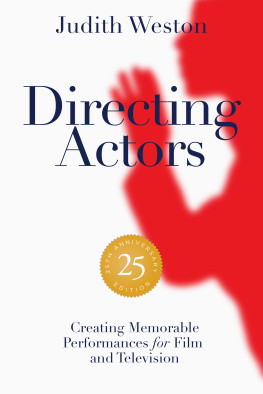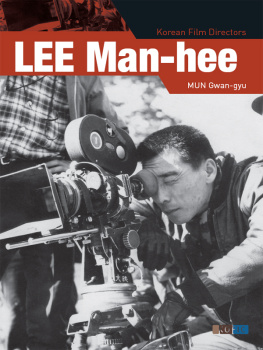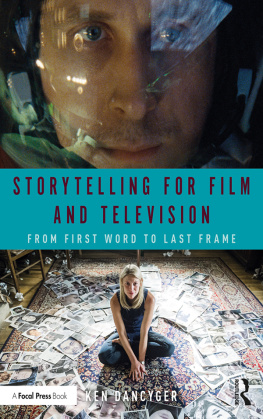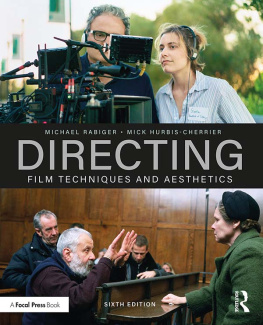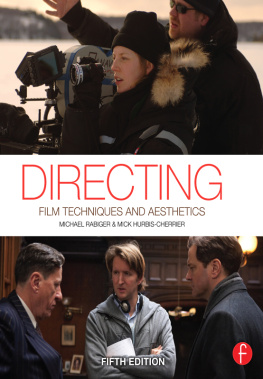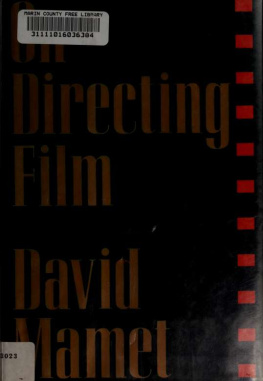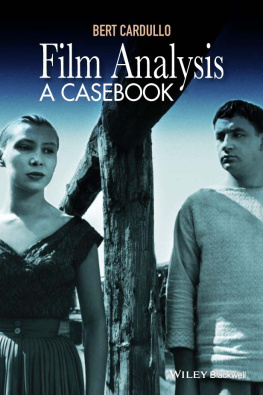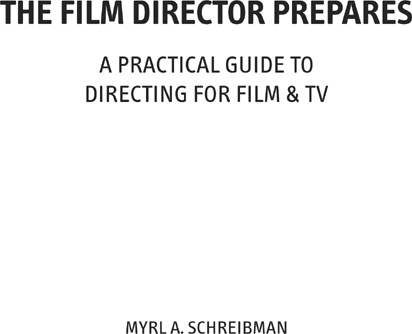Directing is an art form that is one of the foundations for telling stories. It deals with compromise, staying calm, creative and focused while confusion and imposing deadlines materialize limitations. It requires a love for actors and being their pal, confidant and trusted best friend. It demands an understanding of the human condition and knowledge to communicate it visually to affect an audience. It is not just what someone learns in a film school program but also what someone needs to know, feel, and understand about the practical side of telling stories. Myrl Schreibmans The Film Director Prepares does exactly that and more. Schreibman has been there as a director and producer and educator. While there are many books written about directing, only one is able to provide practical directing wisdom. And this is it! No doubt it will be the canon of film directing books for years to come.
Maggie Murphy, President, Kiefer Sutherland Productions
Myrl Schreibman makes a giant leap forward in the world of how to books for directors. While lovingly acknowledging and supporting the creative process that all directors must have and use to realize their visions, he also bluntly and necessarily introduces the real-world problems and shows you how to deal with the challenges that can conspire to crush these visions: producers, studios, budgets, etc. He gently reminds us that the business and the art are inextricably linked and that that knowledge can only help the visionary director get his project made.
Phillip Charles MacKenzie, Cable Ace Award-winning director
Whats a director do, you ask? Read Myrl Schreibmans The Film Director Prepares and youll never ask that question again. So concise! Schreibmans book covers it allfrom the importance of fully understanding the text, through pre-visualization, to the motivation behind still shots and shots that move. Every director, no matter the level of experience, will get something fresh from this thorough, nicely written text. The Table of Contents alone is impressive. The section on understanding actors and the chapter on Directing the Actor are essential reading for any good director/actor relationship. The read is deceptively simple. And Schreibman takes the complex work of a director and breaks it down into a thoroughly readable text.
A.P. Gonzalez, Award-winning writer/director
Myrl Schreibman is one of the people who gave me the encouragement and confidence to go out there and direct films. He was a true inspiration while I was a graduate film student at UCLA. This book proves to be a breath of fresh air as the mysteries of directing a film are clearly explained from a very down-to-earth perspective. Theyre the same professional techniques and directing precepts that he taught me. I use them in both my fiction and documentary work.
William Tyler Smith, Writer/Director, Kiss Me Again; Director, Imagine a School: Summerhill (Documentary)
To my mentor, legendary film director Jack Arnold, and my dear friend Carolyn Haber, who always has unfailing faith in me, this book is dedicated and to Danny and Janet
CONTENTS
The First A.D. and the Script Supervisor
The Right and Left Hands of the Director
FOREWORD
I first met Myrl when I was president of the Directors Guild of America. He was an active participant who attended meetings and was supportive of the Guilds goals. To become a member of the DGA one had to be sponsored by other members, so I knew Myrl was a capable director.
When I became the founding Dean of the UCLA School of Theater Film and Television, Myrl became a colleague of mine and one that I admire greatly. Myrl Schreibman is an excellent teacher and administrator. The knowledge that Myrl brought into the classroom inspired the likes of Justin Lin, Patricia Cardoso, Dan Angel, and an entire generation of directors and producers making their mark in our profession. His industry skills and friendships also provide the school with a professional faculty and administrator who understands the many creative elements that are required of a director, actor, writer, and producer. During his time at UCLA he continues to direct (and produce) achieving the acclaim of his peers and winning awards for his direction.
Now Myrl has written a book about the practical and creative issues that face film and television directors everywhere. Myrls book focuses on the realities of the directing process and the need for directors to plan and to think creatively on their feet when faced with the real problems and limitations that productions often present. The book is full of examples and excellent methods of understanding and handling problems of both talent and camera coverage. Based entirely on practical experience, it demonstrates that it is not only what you do as a director but also how much love you put into the doing. This has been Myrl Schreibmans approach to his work and continues to be the substance of who he is. You will see it in this book and be moved by it as wellThe Film Director Prepares: A Practical Guide to Directing for Film and TV.
Gil Cates
Producer, Director
Past President, Directors Guild of America
PREFACE
During my thirty-five year career, which includes over forty feature films and hundreds of commercials and television shows, I have worked with not only experienced directors but also many first-timers. Early on I realized that directing is an art that is not easily learned. It takes the experience of understanding the pragmatic approach of the directing process and its correlation to the creative result of storytelling. It takes knowing how coverage works in telling that story and working with actors to understand what the camera does to interpret their work. And most importantly, it takes thinking on ones feet in solving problems to get the results on screen while at the same time maintaining the focus that the art of directing demands.
Learning the art of direction can take years of costly trial and error. Well, the learning curve has just been shortened by this no-nonsense book that you are holding in your hands. It comes from a realistic approach based on years of experience from a director who not only directs in various mediums but also produces and understands what a director must do to tell a story.
The Film Director Prepares should be required reading for students of directing, screenwriters, producers and, believe it or not, seasoned directing professionals. If you dont believe me, just ask the director of my next film.
Tom Denove
Cinematographer
ACKNOWLEDGMENTS
I want to thank the many people who I have met in the entertainment industry who, in their own way, have encouraged my passion for images, actors and storytelling and to Dean Robert Rosen of the UCLA School of Theater Film and Television for his words, understanding and assistance. Many thanks to Gil Cates, Tom Denove, and Eyan Schreibman for their contribution and compassion. A special thanks to Delia Salvi for her brilliance and camaraderie. And a particular thank you to Lionsgate Films, Cathy Schulman, Paul Haggis, Bobby Moresco, and Lee Kramer for making it possible to use excerpts from the screenplay Crash. A loving thanks to Robert Fiveson for his contribution and friendship through the years. To Herb Stein, Nathan Amondson, and Barry Zetlin for letting me gather from their individual creative knowledge. And a warm gratitude to Steve Kaminski, Will Gotay, Patsy Lake, and Adrian Morales for their ongoing friendship. And of course gratitude to the smartest attorney/ confidant in the world, Steven M. Stein of Stein and Greene, who is always there at the drop of a hat. I am deeply grateful to Ben Peyser for his genius, dedication, conscience and creative contribution to the book, to Carla Green for her layout genius, and to Betsy Ahlstrand for her commitment. Of course a big thanks to the creative brilliance of Ken Schafer, and to Gabriele Meiringer, Dan Douma, Jesse Douma, and Ethan Markowitz of FrameForge 3D Software for their support, as well as appreciation to the folks at Watson-Guptill. But I cannot go on without my heartfelt gratitude and appreciation to my insightful, soft spoken but relentless editors, Steve Atinsky and Brian Phair, and of course to the most amazing publisher in the world, Jeff Black, who really should have been a movie producer or was in another life! His wisdom, vision, and energy have been one of the driving forces. But most of all, to the hundreds of students and professionals throughout the world who inspired me and gave me clarity and insight into the concepts and knowledge that is offered in this book. Finally, to the many others who have so freely given, I thank you.


